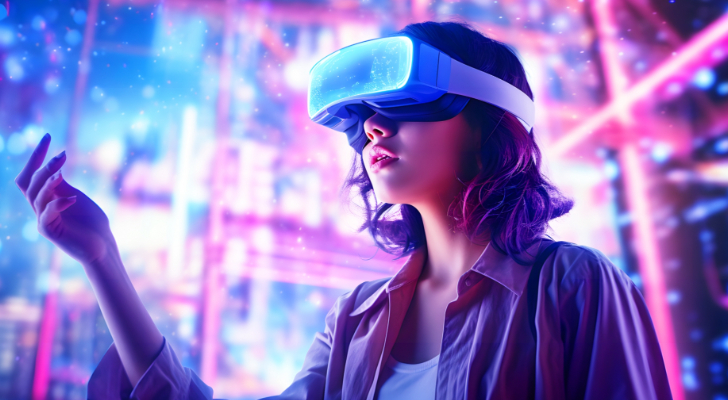Let’s explore the revolutionary future technologies that could transform our future!
Transformative Tech Breakthroughs
Technology is continuously transforming the world. Every day there is a new and innovative breakthrough coming into the tech industry. These include electronic devices, gadgets, powerful software, and many other types of technical products and technologies.
The future world will not be the same. Technology will become even more powerful and even more dominant, and it will lead to different ways of doing things
Let’s discuss the top 5 future technologies that we think will shape our world in the future.
Top 5 Future Technologies That Will Shape Our World
Here are our 5 picks for transformative technologies that will make a significant impact on the world:
- Quantum Computing
- Artificial Intelligence (AI)
- Augmented Reality (AR) and Virtual Reality (VR)
- Internet of Things (IoT)
- Space Exploration and Colonization
Let’s briefly discuss these technologies!
1) Quantum Computing
Quantum computing is a method to solve complex real-world problems that include high-level math and logic using the principle of Quantum Mechanics.
Quantum Mechanics is a type of physics that deals with small-scale atomic and subatomic particles.
Quantum computers are not like the computers of today. Computers that we use today store information in binary format (every bit of data is either 0 or 1). Quantum computers can store information as both 0 and 1 simultaneously.
The result of this is the speed and performance of the computer.
High-level calculations can be implemented and processed at levels well-beyond that of traditional computers.
This will be very useful in drug discovery, cryptography, machine learning, data science, material science, artificial intelligence, etc.
The future of computing could very well be quantum computing.
2) Artificial Intelligence (AI)
Artificial Intelligence (or AI) is the process of developing computer systems or machines that can perform tasks that until now have required human intelligence.
It uses algorithms and models that seemingly give computers the ability to think, reason, learn, and act in ways that resemble human intelligence.
AI is integrated with different technologies such as machine learning, natural language processing, data science, computer vision, etc.
By integrating all of these technologies, AI will be able to handle multiples of the information synthesis and output that humans can handle independently.
A recent example of AI is ChatGPT which can analyze human data (prompts), develop material, synthesize data, give directions, and provide output in text format.
Artificial Intelligence is a future technology that is already here today. It promises to make human life easier, more productive, and more efficient.
3) Augmented Reality (AR) and Virtual Reality (VR)
Augmented Reality (AR) is a way to integrate virtual objects into the real world. It overlays digital media such as images, videos, graphics, animations, and 3D models, into our real-world plane of vision.
These objects are compute-generated allowing us to interact with virtual objects in the real-world in real time.
Virtual Reality (VR) is a technology of the virtual world. It is a fully digital environment that allows us to feel, experience, and interact with in this virtual environment through purpose-built VR headsets or glasses.
This is a 3D virtual world where you can feel, explore, and interact with virtual objects as if they were in the real world.
AR and VR are revolutionizing industries such as gaming, entertainment, education, industrial training, and more. AR and VR technologies allow humans to learn, explore, and interact with virtual objects in the virtual world.

4) Internet of Things (IoT)
The Internet of Things (IoT) is a technology network where multiple electronic hardware devices are connected together through the Internet and can share information. The “things” (electronic hardware) are connected to the Internet which is how the IoT name is derived.
The network of electronic hardware is connected to a cloud via the Internet, where data can be shared. The connectivity may be Wi-Fi, Bluetooth, NFC, etc., depending on system requirements.
Electronic devices can be controlled through remote devices or mobile phones connected to the IoT network.
Home Automation allows appliances to be monitored and controlled remotely. Cars, such as Tesla, can connect to smart devices for security systems and monitoring. In the future, smart cities could be monitored and regulated through IoT.
5) Space Exploration and Colonization
But why stop at Earth for technological advance?
Space-based technologies are in our future. Space exploration and colonization allow us to gain more knowledge and understanding of the universe and open new possibilities for human habitation beyond the Earth.
Every year, hundreds of rockets, spacecraft, and satellites are launched by big governments as well as private companies. JAXA, NASA, Starlink, and SpaceX have been very active.
These entities are actively developing tools and know-how for space exploration, scientific space research, satellite technology development, and worlds beyond Earth.
Space and satellite-based technologies give us better understanding of the condition of our planet Earth, including weather data, climate data, etc.



